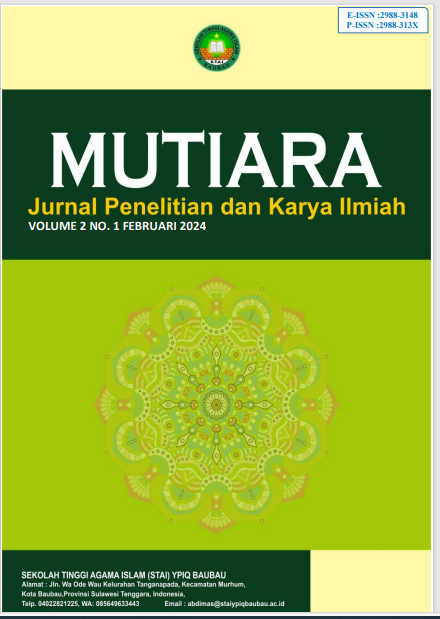Sejarah Peradaban Islam Pada Masa Rasulullah SAW; Rasulullah SAW Sebagai Pemimpin Agama dan Negara
DOI:
https://doi.org/10.59059/mutiara.v2i1.948Keywords:
Leasdership, Preaching, Religion, Country, IslamAbstract
After the Prophet Muhammad received the order to preach openly, the Quraish leaders began trying to block the Prophet Muhammad's preaching. The more the number of the Prophet's followers increased, the more intense the challenge posed by the Quraysh became. There were five factors that caused the Quraysh to reject the call of Islam, namely as follows: First, the Quraysh could not differentiate between prophethood and power, they believed that obeying Muhammad's call meant submitting to the leadership of the Bani Abdul Mutholib, the leadership of the Prophet Muhammad's grandfather. Second, the Prophet Muhammad called for equal rights between nobles and servants, this was not approved by the Quraish nobles. Third, the Quraish leaders could not accept the teachings about yaumul ba'ats (day of resurrection) and retribution in the afterlife. Fourth, devotion to ancestors is a habit inherent in the Arab nation. Fifth, sculptors and statue sellers consider Islam to be an obstacle to sustenance. This article will discuss the history of Islamic civilization during the time of the Prophet Muhammad, as well as his role as a religious and state leader. This article uses the library study research method, using reference data in the form of books, articles, journals and related scientific papers. Apart from being a religious leader, the Prophet Muhammad was also a statesman, political leader and capable administrator. Within a period of eleven years he became a political leader who succeeded in subordinating the entire Arabian Peninsula to his rule.
References
Haekal Muhammad Husain. 1990. Sejarah Hidup Muhammad, Cet. 12. Jakarta: Litera Antarnusa.
Ibrahim Hassan. 1989. Sejarah dan Kebudayaan Islam. Yogyakarta: Penerbit Kota Kembang.
Nasution Harun. 1985. Islam Ditinjau dari Berbagai Aspeknya, Jilid 1, Cet. 5. Jakarta: UI Press.
Syalabi Ahmad. 1983. Sejarah dan Kebudayaan Islam. Jakarta: Pustaka Al-Husna.
Yatim Badri. 2020. Sejarah Peradaban Islam. Depok: PT RajaGrafindo Persada.
Yamin Muhammad, 2017. Peradaban Islam pada Masa Nabi Muhammad SAW. Vol. 3, No. 1. Ihya Al-Arabiyah.








